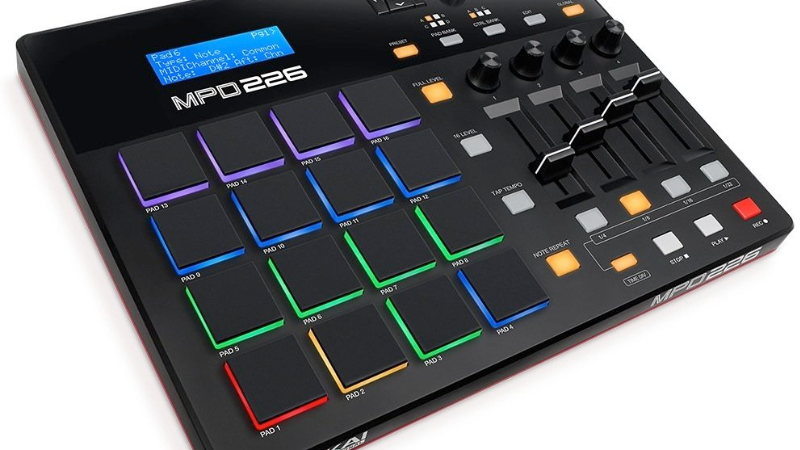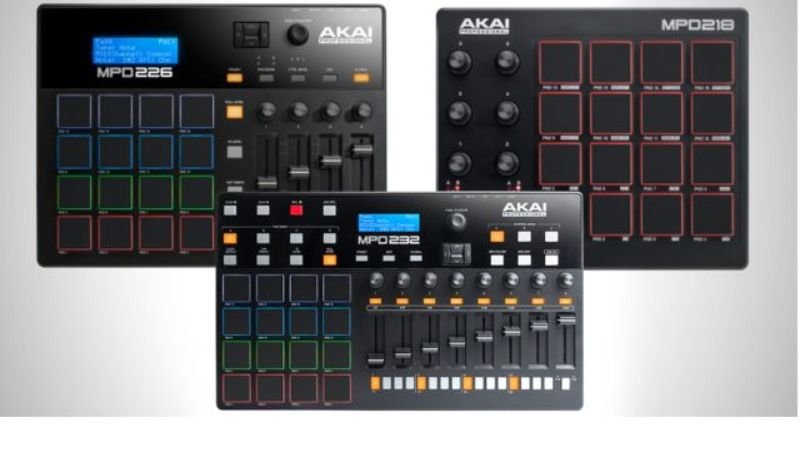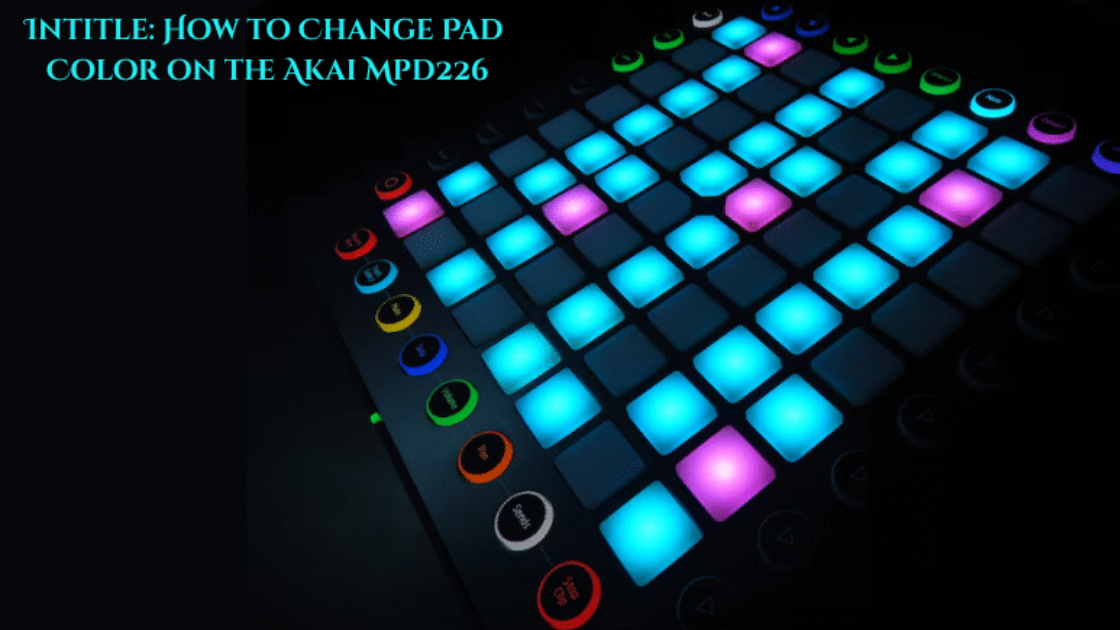The Akai MPD226 is a powerful tool for any music producer, yet many users overlook the customization options that can enhance their creative workflow. Intitle: How to Change Pad Color on the Akai Mpd226 offers an in-depth look at this often-ignored feature, which can not only personalize your setup but also improve your performance.
Changing pad colors isn’t merely for aesthetics—it can significantly improve your organization and creativity while making beats. In this article, we’ll explore the steps to transform your MPD226’s appearance, along with tips for maximizing its potential in your creative process.
What is the Akai MPD226?
The Akai MPD226 stands out in the realm of MIDI controllers, seamlessly merging the tactile experience of hardware with the versatility of software. Its 16 RGB pads are not just visually appealing; they respond to both velocity and pressure, allowing producers to express their creativity with nuanced dynamics.
Whether you’re laying down a drum beat or triggering samples, these pads illuminate in vibrant colors, making your workflow not only efficient but also visually engaging.Beyond its striking pads, the MPD226 offers an array of customizable controls, including four assignable faders, knobs, and buttons.
This hands-on approach empowers users to manipulate their software in real-time, enhancing the overall production experience. Key features such as Note Repeat, Swing, and Full Level replicate the essence of the legendary MPC series, enabling musicians to infuse their tracks with that unmistakable groove.
With USB power and MIDI In/Out connectivity, plus iOS compatibility via a Camera Connection Kit, the MPD226 is designed for today’s on-the-go producers.
Why Change the Pad Colors on Your Akai MPD226?
Customizing the pad colors on your Akai MPD226 isn’t just about aesthetics; it’s a strategic move to enhance your music-making experience. By assigning specific colors to different sounds—like fiery red for kicks and calming blue for snares—you create a visual roadmap that streamlines your workflow.
This organization allows you to quickly locate the sounds you need, reducing distractions and helping you stay in the creative zone.Moreover, the MPD226’s four banks of 16 pads each offer a fantastic opportunity for organization through color coding.
By assigning distinct color schemes to each bank, you can quickly identify which set you’re using, reducing distractions during live performances or recording sessions. This customization not only boosts your efficiency but also adds a layer of professionalism to your setup.
What You’ll Need to Get Started
To embark on your journey of customizing the Akai MPD226, you’ll first want to gather a few essential tools. The Akai MPD226 itself is your centerpiece—ensure it’s either charged or plugged in for uninterrupted creativity. Pair it with the included USB cable to connect seamlessly to your computer, whether you’re using a Mac or Windows device.
This connection opens up a world of possibilities, allowing you to dive into the software side of customization.Next, don’t forget to download the Akai Software Preset Editor from Akai’s website. This free tool is pivotal for tailoring your MPD226 to fit your unique style. If you’re feeling adventurous and prefer hands-on adjustments, you can skip the software altogether and edit directly on the device itself.
How to Change Pad Colors Using Software: Step-by-Step
To change the pad colors on your Akai MPD226 using the Software Preset Editor, start by downloading and installing the software from the Akai Professional website. Simply navigate to the MPD226 product page and follow the installation prompts to get everything set up quickly and efficiently. Once installed, connect your MPD226 to your computer using a USB cable; you should see the pads light up in their default colors, confirming a successful connection.
Now it’s time to dive into the Software Preset Editor. Upon launching the application, you’ll be greeted with a virtual interface that mirrors your MPD226’s layout, showcasing all 16 pads along with knobs and faders. This visual representation makes it easy to select which pad you’d like to customize.
Simply click on a pad, choose your desired color from the palette, and watch as your MPD226 transforms before your eyes. It’s an intuitive process that allows for creative expression, ensuring each performance can be uniquely tailored to your style.
How to Change Pad Colors On the MPD226 Itself
To change the pad colors on the Akai MPD226 without needing a computer, simply enter Edit Mode by pressing the “Edit” button, typically located near the display. The LCD screen will confirm that you’re in this mode, ready for your creative adjustments. Next, select the pad you wish to modify by tapping it; this action prompts the screen to display the current settings, such as “Pad 1.”

Once you’ve selected your pad, navigate through its parameters using the arrow buttons until you reach the “Color” setting. Simply turn the rotary knob—this intuitive dial allows you to cycle through a vibrant palette of options, including eye-catching reds, calming blues, and cheerful yellows.
Once you’ve landed on a color that resonates with your creative vibe, secure your choice by pressing the “Enter” button. This step locks in your selection, ensuring that each pad can showcase its individuality.
Feel free to repeat this process for each pad you wish to customize. The ability to tailor the colors not only enhances your workflow but also adds a personal touch to your setup. After you’ve made all your selections, exit Edit Mode by pressing the “Edit” button again. Your pads will now display their new colors, transforming your MPD226 into a visually inspiring instrument that reflects your unique style and musical expression.
Tips for Customizing Your Pad Colors
Customizing the pad colors on your Akai MPD226 is more than just an aesthetic choice; it’s about enhancing your workflow and creativity. Start by aligning your color scheme with the genre of music you’re producing.
Color-Code Your Sounds
Assigning colors to sound types can speed up your workflow. Here’s a sample setup:
| Sound Type | Color | Why It Works |
| Kick Drum | Red | Bold and foundational |
| Snare | Blue | Stands out from the kick |
| Hi-Hat | Yellow | Bright and crisp |
| Percussion | Green | Earthy and versatile |
| Bass | Purple | Deep and rich |
| Synth/Melody | Orange | Warm and melodic |
| Effects | Pink | Fun and attention-grabbing |
Organize by Bank
- Organize your pad colors by bank for easy identification during performances.
- Bank A should feature a palette of red tones, ideal for all your drum sounds.
- Assign blue tones to Bank B, creating a cohesive look for your melodic elements.
- Use green shades in Bank C to designate effects, making them stand out when you need them.
- For Bank D, opt for a mix of colors to represent miscellaneous sounds, adding versatility to your setup.
- This color-coding system allows for quick visual navigation, especially beneficial during live sets where time is of the essence.
Match Your Vibe
When it comes to customizing your pad colors on the Akai MPD226, think of it as an extension of your artistic expression. Choose shades that resonate with your creative energy—if you’re crafting a mellow tune, consider using calming blues and gentle purples to set a serene atmosphere.
Conversely, if you’re gearing up for a high-energy performance, vibrant reds and yellows can elevate the excitement, creating a visual cue that matches the intensity of your music. For example, if you’re inspired by tracks like Miggas in paris lyrics, those bold colors can visually mirror the dynamic, hard-hitting rhythm of your beats.
Think About Lighting
When customizing your pad colors on the Akai MPD226, it’s essential to consider the lighting conditions of your performance space. Dark environments can significantly alter how colors appear, so testing your selections under those specific lights is crucial.
Bright, vibrant colors like white and neon green tend to stand out more prominently against dim backdrops, ensuring that your setup remains visually striking even in low light.
Save Multiple Presets
One of the most exciting features of the Akai MPD226 is its ability to store multiple color presets for your pads. This means you can easily switch between different setups depending on your creative needs.
For instance, if you’re working in the studio, you might opt for a calming palette of cool blues and greens that inspire focus. On the other hand, when you take your performance live, a burst of bright reds and yellows could energize both you and your audience.
How Does the MPD226 Compare to Other Controllers?
When comparing the MPD226 to other pad controllers, its standout feature is the on-device editing capability, a rarity that sets it apart in a crowded market. This allows users to easily customize their pads without needing to dive into complex software, making it an ideal choice for those who prioritize portability and quick adjustments.

In contrast, while the Launchpad boasts a larger grid of pads, it heavily relies on software for customization, which can be a drawback for live performances or spontaneous creativity.
The Push, on the other hand, is known for its deep integration with Ableton Live and offers extensive features that cater to advanced users, but this comes at a higher price point.
For those who want a balance between versatility and ease of use, the MPD226 emerges as a sweet spot. When it comes to changing pad colors, users will appreciate the flexibility that the MPD226 provides—allowing for personal expression without the hassle of software dependencies.
Whether you’re a beginner or a seasoned pro, understanding Intitle: How to Change Pad Color on the Akai Mpd226 can enhance your workflow and creativity, making it a compelling choice in the realm of pad controllers.
Troubleshooting Pad Color Issues
- Colors Not Changing: Verify that you’ve saved and sent the preset in the software, and confirm that you’ve pressed “Enter” while in edit mode. If issues persist, consider restarting your MPD226 to refresh its settings.
- Software Connection Issues: If the software isn’t connecting, inspect your USB cable and port for any faults. A glitchy connection might require you to reinstall the Software Preset Editor to restore functionality.
- Limited Color Options on Device: Be aware that the hardware may have a more restricted color palette compared to what’s available in the software. Switching to the editor can unlock a broader spectrum of colors.
- Pads Resetting Colors: If you notice that colors revert when unplugging the device, it’s crucial to ensure that the preset is saved directly to the MPD226 rather than just within the software.
Going Beyond Static Colors
Imagine your pads not just sitting still but pulsating in sync with the rhythm of your tracks. Some advanced setups allow for dynamic color changes, where the pads glow brighter with each vigorous hit or shift colors as different loops play. This captivating feature enhances your performance, creating a visual spectacle that complements your sound.
However, to unlock this potential, you need to delve into your DAW’s MIDI mapping capabilities, as it requires sending MIDI feedback to the Akai MPD226.
Why the Akai MPD226 Stands Out
The Akai MPD226 is more than just an eye-catching controller with customizable pad colors; it’s a powerhouse designed to elevate your music production experience. Its USB-powered design ensures maximum portability, allowing you to create on the go without the hassle of bulky adapters.
Built with durability in mind, this device can withstand the rigors of live performances, making it a reliable companion for both studio sessions and gigs.
Conclusion
To wrap up, modifying the Intitle: How to Change Pad Color on the Akai Mpd226 allows for greater expression and personalization in your music production journey. As detailed in the article, the process is simple and can be completed in just a few minutes, resulting in a more engaging and intuitive setup.
Customizing your pads not only improves aesthetics but also aids in performance efficiency, making it easier to navigate your beats. Whether you’re performing live or working in the studio, taking the time to change pad colors can provide a fresh perspective on your workflow. Don’t hesitate to experiment with different colors—unlock the full potential of your Akai MPD226 today!
FAQ
How do I change the pad color on the Akai MPD226?
To change the pad color, press the “Pad Color” button, then select your desired color using the pads or the value dial.
Can I customize each pad to a different color?
Yes, you can customize each pad individually by selecting a pad and choosing a different color for each one.
Is there a limit to how many colors I can choose from?
The Akai MPD226 offers a variety of colors to choose from, typically around 16 different color options for customization.
